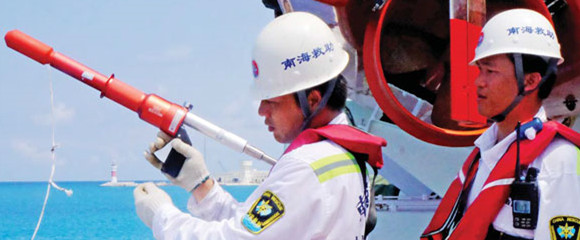WHO urges the use and promotion of plain packaging to reduce tobacco-related harms
Updated: 2016-05-31 11:35
(chinadaily.com.cn)
|
|||||||||
MANILA -- On World No Tobacco Day, the World Health Organization (WHO) in the Western Pacific continues its call for governments, civil society and other partners, to support the implementation and promotion of the use of plain packaging as a tobacco control measure.
Tobacco is one of the leading risk factors for noncommunicable diseases. One out of three smokers in the world—450 million smokers—lives in the Western Pacific Region. Half of the men in the Region smoke, with nearly half of children regularly exposed to deadly second-hand smoke. Every 30 seconds, a life is lost to tobacco-related disease.
"Plain packaging is a good public health measure because it prevents tobacco companies from using packaging as an effective marketing tool," said Dr Shin Young-soo, WHO Regional Director for the Western Pacific. "Australia has paved the way and is the first country in the world to mandate plain packaging for tobacco products. This example can be followed to reduce the attractiveness and appeal of tobacco products to consumers. International solidarity is therefore vital to overcome the challenges of tobacco and reverse its dreadful effects," said Dr Shin.
The impact of plain packaging
Studies have shown that plain packaging decreases the appeal of tobacco products, restricts use of the pack as a form of advertising and promotion, limits misleading packaging and increases the effectiveness of health warnings. In December 2012, Australia's pioneering laws on tobacco plain packaging came into full effect. Since then, all tobacco products must be sold in drab dark brown packaging with large graphic health warnings that depict the health consequences of smoking, without logos or other advertising or promotion features.
WHO recommends that plain packaging be implemented as part of a comprehensive approach to tobacco control that includes comprehensive bans on tobacco advertising, promotion and sponsorship and other packaging and labelling measures, such as health warnings.
Australia, Brunei Darussalam, Cambodia, Fiji, Kiribati, Malaysia, Mongolia, New Zealand, the Philippines, the Republic of Korea, Singapore, Solomon Islands, Vanuatu and Viet Nam, have adopted the use of graphic health warnings, which require tobacco manufacturers to display pictures on cigarette packs showing the harmful effects of smoking. Just this month, the Lao People's Democratic Republic adopted a new law for graphic health warnings covering 75% of the front and back sides of the pack, while Vanuatu's new law covers 90%.
Studies carried out after the implementation of pictorial package warnings consistently shows that pictorial warnings significantly increase people's awareness of the harms of tobacco use. Only 42 countries, representing 19% of the world's population, meet the best practice for pictorial warnings, which includes the warnings in the local language and cover an average of at least half of the front and back of cigarette packs. Most of these countries are low- or middle-income countries.
Tobacco use in the Western Pacific Region
Tobacco use is one of the biggest contributors to the epidemic of noncommunicable diseases in the Western Pacific Region. Of WHO's six regions, the Western Pacific Region has the most number of smokers at 450 million and nearly half of all children in the Region are exposed to second-hand smoke. Tobacco smoke contains more than 4000 chemicals, of which 70 are known carcinogens. Globally, second-hand smoke causes an estimated 600 000 deaths. Moreover, the tobacco epidemic also threatens to undermine other public health gains and hamper economic growth and development in the Region.
Related Stories
WHO:260,000 die in China as a result of road accidents 2016-05-24 11:07
Global health development entering new era: WHO chief 2016-05-24 10:15
New WHO guidelines issued on female genital mutilation 2016-05-17 11:09
Taiwan's WHO event role in jeopardy 2016-05-10 08:08
Today's Top News
Economists urge go-slow on EU's anti-dumping
Chinese investors eye European soccer goal
Rescue vessel eyed for the Nansha Islands
Steeled for change
EU has to cope with outcome of British referendum
Four Chinese banks among world's 10 largest
Kiev swaps Russian detainees for Ukraine's Savchenko
Refugees relocated during major police operation
Hot Topics
Lunar probe , China growth forecasts, Emission rules get tougher, China seen through 'colored lens', International board,
Editor's Picks

|

|

|

|

|

|







